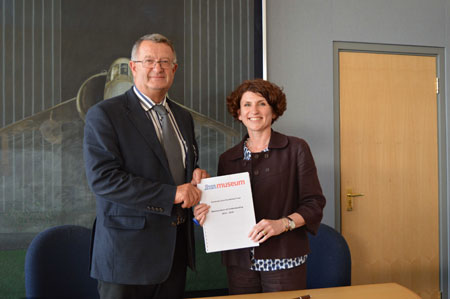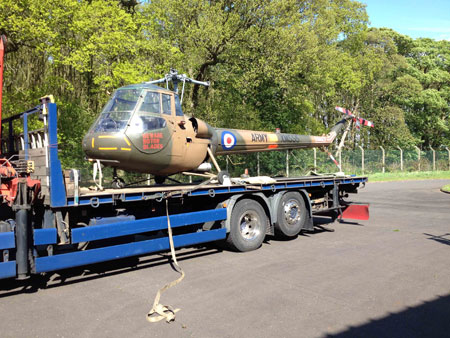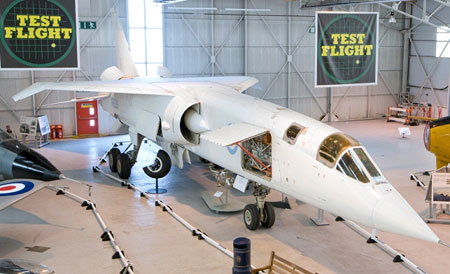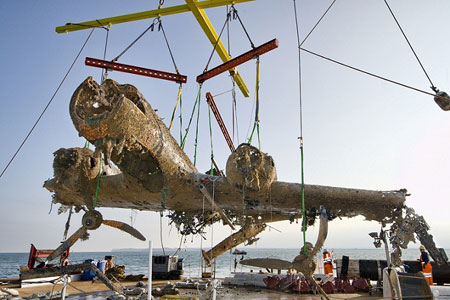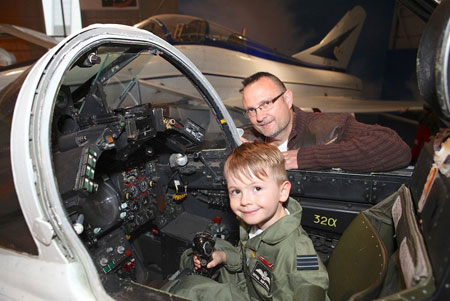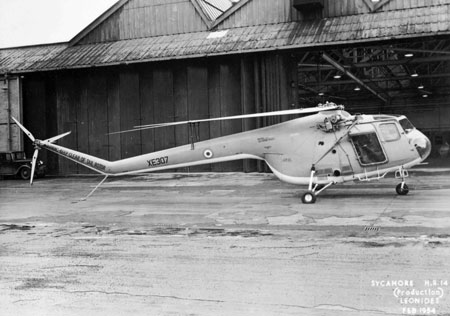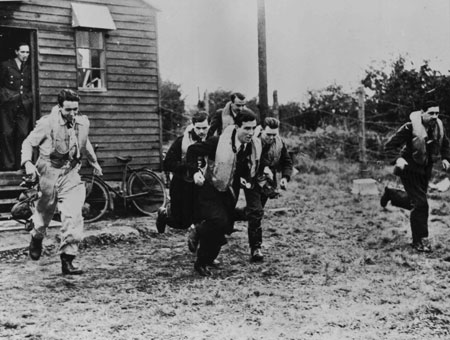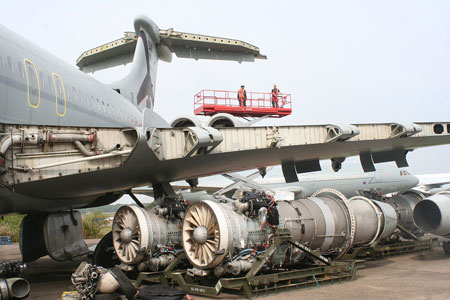
The Royal Air Force Museum Cosford is pleased to announce that its latest acquisition, VC10 serial number XR808 is now over half way through a successful dismantling process and is being prepared for its final move to Cosford in the Summer.
The dismantling is being carried out by GJD Services, a specialist maintenance and aircraft salvage company based at Bruntingthorpe, Leicestershire. The process has taken a team of 8 over 7 months so far and the next few weeks will see the final work carried out, which includes removing the rear fuselage, inner wings and main undercarriage.
The aircraft is scheduled to leave Bruntingthorpe in June, following the RAF Cosford Air Show and will travel by road. The route will see the giant fuselage on a low loader lorry travel along the M69, M6 and the M54 and is sure to attract a huge amount of interest from the media and aviation enthusiasts alike, as they capture this rare spectacle.
As the aircraft arrives in Shropshire, the VC10 will be positioned on the airfield at RAF Cosford whilst the wings, fuselage and landing gears are reassembled. The aircraft will then make the final few steps onto the Museum site to allow the fitment of the rear fuselage fin, tail plane and engines. Later in the summer it will go on permanent display to visitors outside next to the Lockheed Hercules C130K Mk3.
Gary Spoors, Accountable/Engineering Manager at GJD Services said:
“We, at GJD, have been given a fantastic opportunity to demonstrate our engineering skills and abilities during the dismantling and the eventual re building process of XR808. This is all made possible by the skill and dedication of the GJD staff and their overriding wish to make this happen. Personally I have a fond attachment to the VC10; she was the first aircraft I flew on, then subsequently ended up working on during my RAF Career and now again as the head of GJD.
Having this example of a VC10 in the RAF Museum provides the best opportunity for the long term preservation of the type ensuring an icon of British Aviation is secured for future generations to enjoy. Preserving our aviation heritage is important to me and I am extremely proud to be given the opportunity to be part of this project.”
The VC10 was a British aircraft originally built by Vickers-Armstrong and then later by the British Aircraft Corporation and entered service with Royal Air Force in 1966. Now at the end of its service career, this dual-role aircraft enabled the rapid deployment of troops and their weaponry and fast jet aircraft to many theatres of operations around the world. With the ability to carry up to 124 troops at a time with nine crew members or a freight load of up to 20,400kgs the VC10 has been one of the RAF’s most significant assets for nearly 50 years.
The Museum’s new aircraft, serial number XR808 was part of an initial order of five VC10s for the RAF and was to be used for VIP and Far East Routes. After an initial period at RAF Fairford, XR808 spent the next 46 years based at RAF Brize Norton. In 1968 all 14 of the RAF’s VC10s were named after RFC/RAF holders of the Victoria Cross and XR808 was named Kenneth Campbell, after the Flying Officer who made a precision torpedo attack on the German battle ship Gneisenau. The RAF VC10’s allowed true global mobility offering a combination of speed and range never previously attained by an RAF Transport Command aircraft type.
Having travelled the world with No.10 Squadron including Colombo, Calgary, Hong Kong, Gutersloh and Bahrain, the aircraft was transferred to No.101 Squadron in 2006. During the early stages of the Afghanistan War the aircraft operated support flight for joint Czech Republic and UK exercises during ‘Operation Rhino’, a raid by the United States Army Rangers on several Taliban targets. As the number of VC10’s began to dwindle, the Museum’s latest acquisition led a special formation flight over seven UK RAF stations to mark 50 years of the VC10 and 95 years of 101 Squadron
Ian Thirsk, Head of Collections at the RAF Museum said:
“The BAC VC-10 formed the mainstay of the RAF’s long range strategic transport force for almost fifty years. For one aircraft type to have been in service for such a long period is remarkable in itself. However, when this is added to the variety of roles and worldwide scope of operations, it is clear this is a unique aircraft and it would not be possible to accurately portray the history of the RAF without an example of the type – therefore it is essential that such a pivotal and long serving aircraft is preserved by the RAF Museum.”
For further information about the Museum, please visit the Museum website www.rafmuseum.org or call 01902 376200. The Museum is open daily from 10am and entry to the Museum is FREE of charge.
